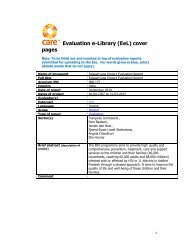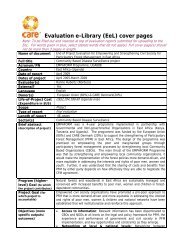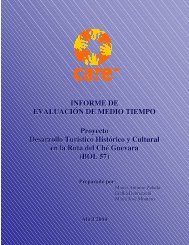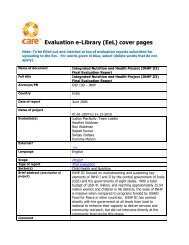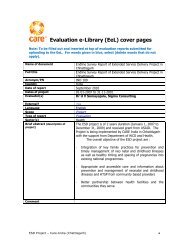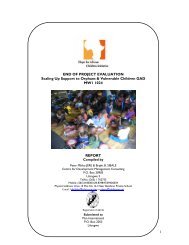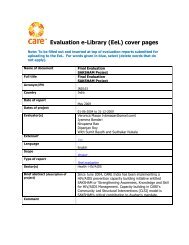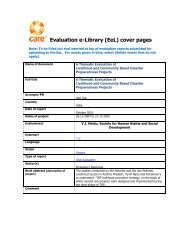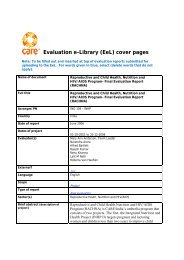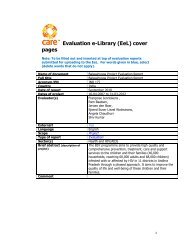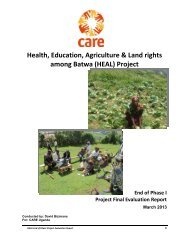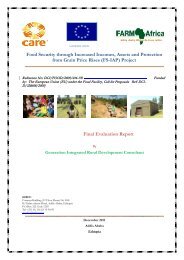IND 199 ECDE Baseline - CARE International's Electronic ...
IND 199 ECDE Baseline - CARE International's Electronic ...
IND 199 ECDE Baseline - CARE International's Electronic ...
- No tags were found...
You also want an ePaper? Increase the reach of your titles
YUMPU automatically turns print PDFs into web optimized ePapers that Google loves.
xliii• Majority of them (56% in intervention districts and 67% in control district) gave more than30 minutes to their child to play outside their house. The proportion of such respondentsare 68 percent and 43 percent in Janjgir and korba district respectively.• Children mostly play with neighbour’s children and siblings• Regarding specific place for playing of children , one – third in intervention and 69 percentin control district replied in affirmative. Majority of them (77% in intervention and 90% incontrol district) reported that the children play in ghar ka angan• About four – fifths of the respondents take their child out door to show things• More than 70 percent of them in intervention districts and 92 percent in control districttake their child outdoor to show things either fortnightly or monthly.5.1.2 Activities inside homeAll the surveyed respondents were asked whether their child has toys at home and if yes, theywere further enquired which types of toys their child has, who cleans the toys , whether thetoys were bought or made at home and where the material of the child including toys are kept.Table 5.2 provides such information. They were also asked whether they tell a story to theirchild & if yes, what is the frequency of telling a story.Table 5.2: Playing activities of children aged 3-3.5 years inside home(Percentage)Intervention districts Control districtParticularsInterventionAWCsIntermediateAWCsControlAWCsWhether the child has toysat home (n=) 442 440 466Yes 80.1 80 85.6Types of toys the child has (n=) 354 352 399Doll 75.4 79.3 65.2Car/bus/other motor vehicle 67.5 59.9 67.4Bat-ball 44.6 40.9 30.6Ball 38.4 34.9 56.1Others 1.4 1.1 3.3Whether bought the toys ordeveloped at home (n=) 354 352 399Bought 98 98.3 93Developed at home 5.4 6.5 17.8Whether a story told tothe child (n=) 442 440 466Yes 54.1 49.1 57.5Frequency of telling a story (n=) 239 216 268Every day 17.2 13.4 31.3Once a week 25.1 31 41.8Few times in a month 55.7 52.8 26.1DK/CS 2.1 2.8 0.7Form the table, the following findings have emerged.• Four – fifths of the respondents in intervention districts (88% in Janjgir and 73% inkorba) and 86 percent in control district reported that their child has toys to play withinside home.<strong>Baseline</strong> Study Of Early Childhood Care And Development Project In ChattisgarhApril,2012



